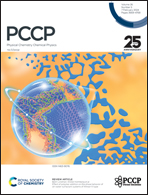Optimizing skyrmionium movement and stability via stray magnetic fields in trilayer nanowire constructs
Abstract
Skyrmioniums, known for their unique transport and regulatory properties, are emerging as potential cornerstones for future data storage systems. However, the stability of skyrmionium movement faces considerable challenges due to the skyrmion Hall effect, which is induced by deformation. In response, our research introduces an innovative solution: we utilized micro-magnetic simulations to create a sandwiched trilayer nanowire structure augmented with a stray magnetic field. This combination effectively guides the skyrmionium within the ferromagnetic (FM) layer. Our empirical investigations reveal that the use of a stray magnetic field not only reduces the size of the skyrmionium but also amplifies its stability. This dual-effect proficiently mitigates the deformation of skyrmionium movement and boosts their thermal stability. We find these positive outcomes are most pronounced at a particular intensity of the stray magnetic field. Importantly, the required stray magnetic field can be generated using a heavy metal (HM1) layer of suitable thickness, rendering the practical application of this approach plausible in real-world experiments. Additionally, we analyze the functioning mechanism based on the Landau–Lifshitz–Gilbert (LLG) equation and energy variation. We also develop a deep spiking neural network (DSNN), which achieves a remarkable recognition accuracy of 97%. This achievement is realized through supervised learning via the spike timing dependent plasticity rule (STDP), considering the nanostructure as an artificial synapse device that corresponds to the electrical properties of the nanostructure. In conclusion, our study provides invaluable insights for the design of innovative information storage devices utilizing skyrmionium technology. By tackling the issues presented by the skyrmion Hall effect, we outline a feasible route for the practical application of this advanced technology. Our research, therefore, serves as a robust platform for continued investigations in this field.



 Please wait while we load your content...
Please wait while we load your content...